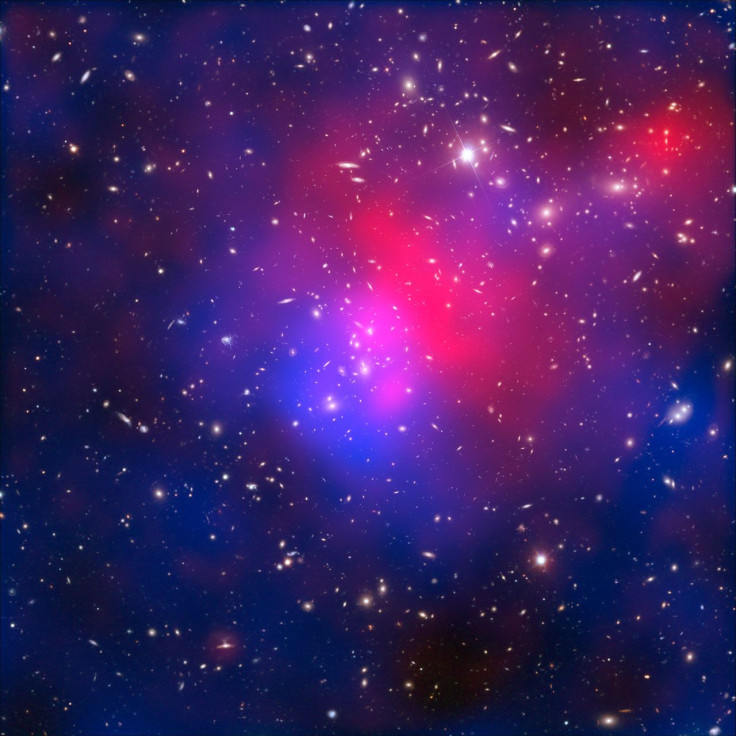Hubble Will Use The Magnifying Power Of 'Pandora's Cluster,' Abell 2744, To Explore Distant Galaxies
The Hubble Space Telesecope's new observing program, Frontier Fields, has revealed its first image. Hubble has observed the Abell 2744 galaxy cluster, known as "Pandora's Cluster," and will use gravitational lensing to get a detailed look at distant galaxies.

According to the Hubble press release, Abell 2744 is the result of at least four galaxy clusters merging. The collision of hundreds of galaxies has led to some peculiar phenomena, and previous Hubble observations determined the mass of Abell 2744 is made up of galaxies (roughly 5 percent), hot gas (20 percent) and dark matter (around 75 percent). Some features observed by the space telescope include regions that only contain dark matter with no hot gas or galaxies present, while another region features galaxies and dark matter but no evidence of hot gas.
Abell 2744 is located 3.5 billion light-years from Earth. Dan Coe, who led the research on Abell 2744 in a previous study, said in a statement, "Abell 2744 seems to have formed from four different clusters involved in a series of collisions over a period of some 350 million years. The complicated and uneven distribution of the different types of matter is extremely unusual and fascinating."
The new Hubble image shows spiral and elliptical galaxies as well as the distorted images of distant galaxies, seen as arcs throughout the image. Hubble will use the Abell 2744 galaxy cluster as a way to observe even more distant galaxies via gravitational lensing.

According to Hubble, "Gravitational lensing is a phenomenon caused by an object's influence on the space-time around it." In warped space-time, light from distant galaxies will bend around the object, in this case the Abell 2744 galaxy cluster, and to the observer. Gravitational lensing also helps magnify the image of the more-distant galaxy.
Hubble's Frontier Fields will use gravitational lensing from six galaxy clusters to observe more distant galaxies. For Abell 2744, several galaxy candidates were identified using this technique and the research was submitted to the Astrophysical Journal.
© Copyright IBTimes 2025. All rights reserved.






















